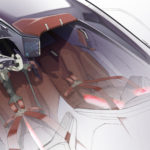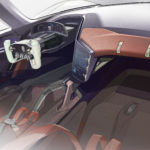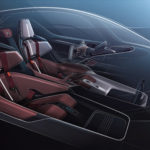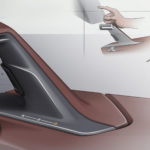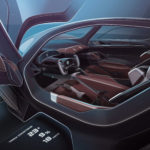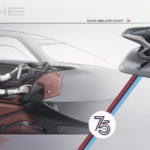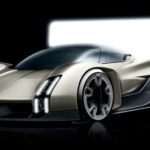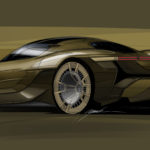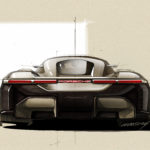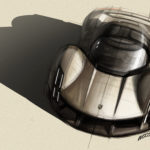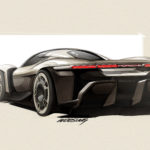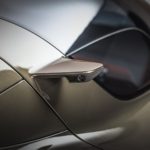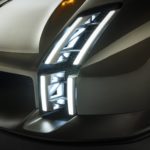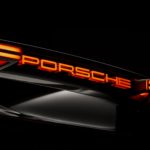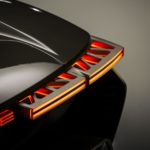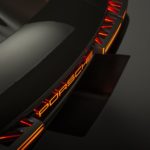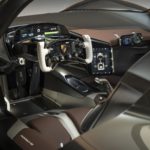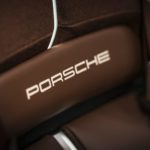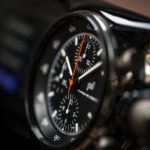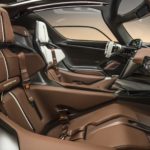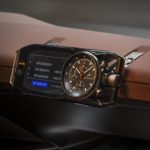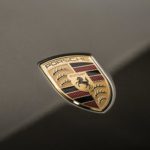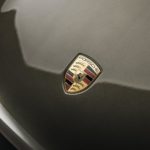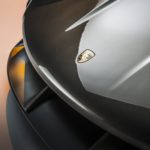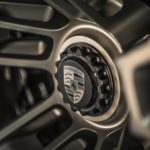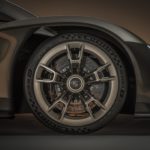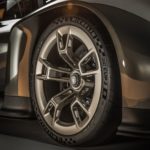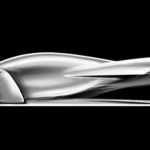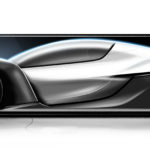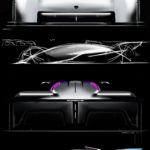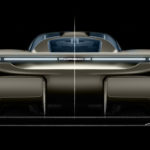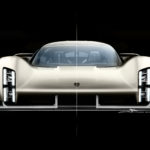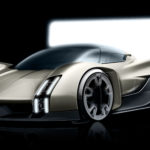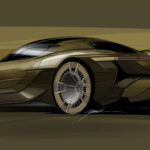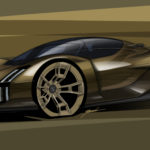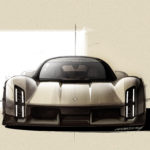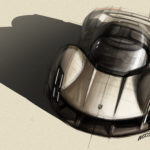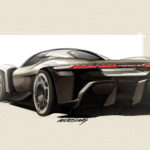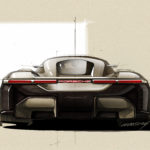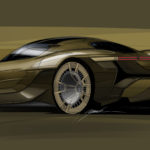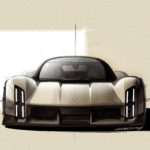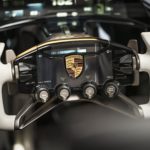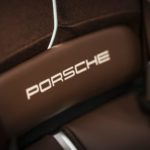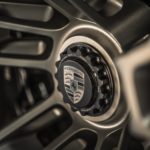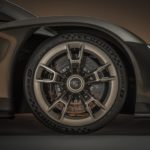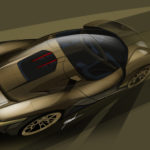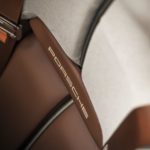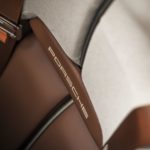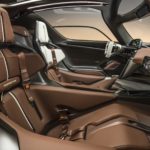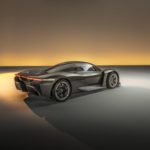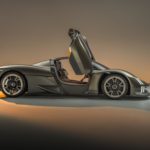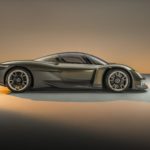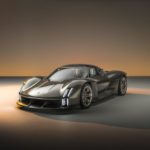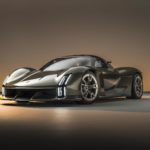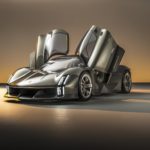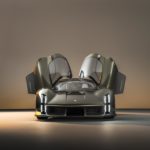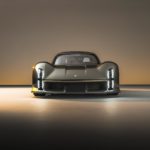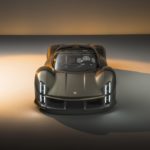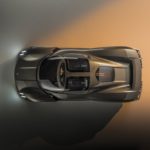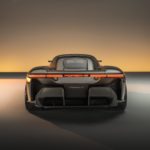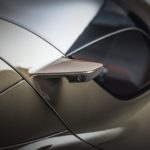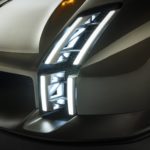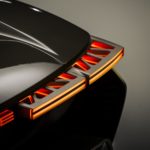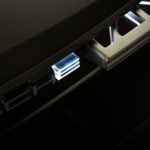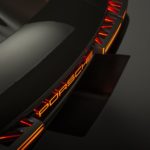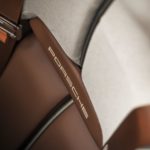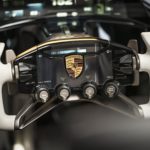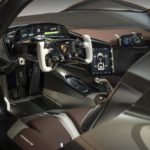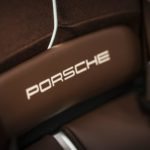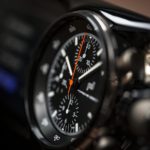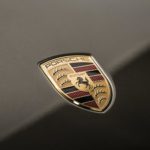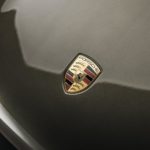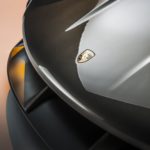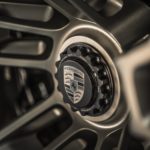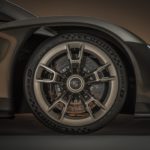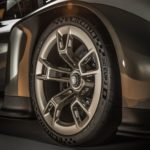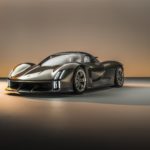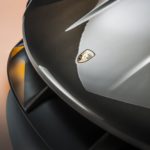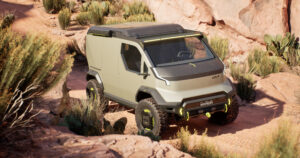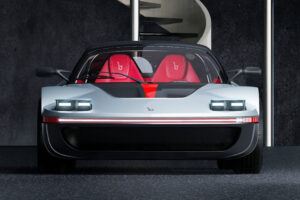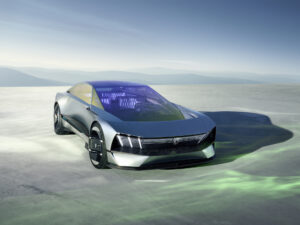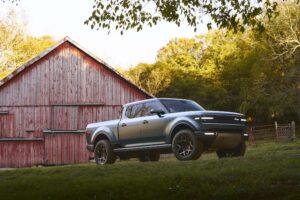Porsche Mission X Hypercar Concept
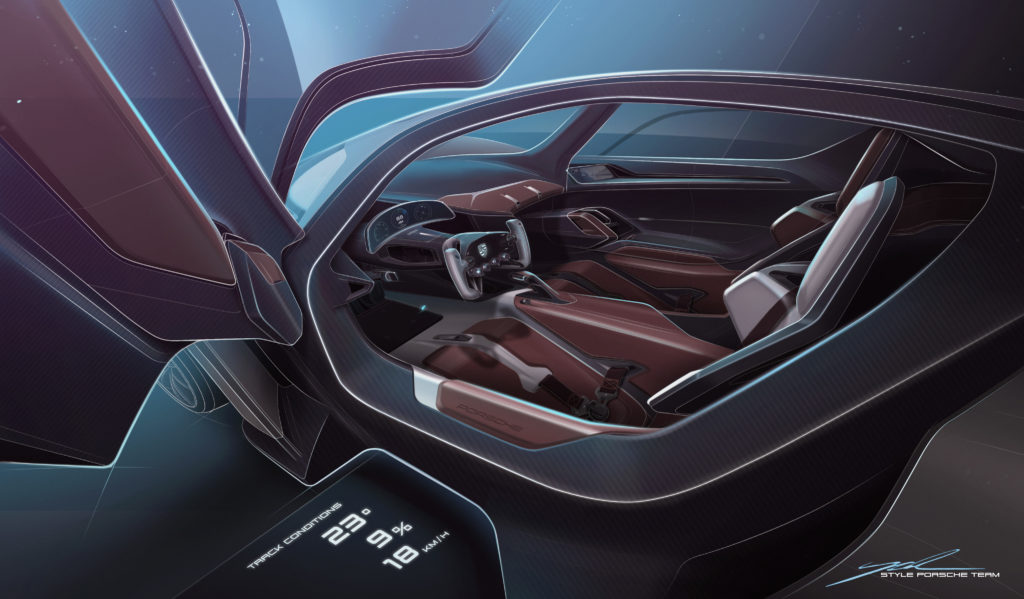
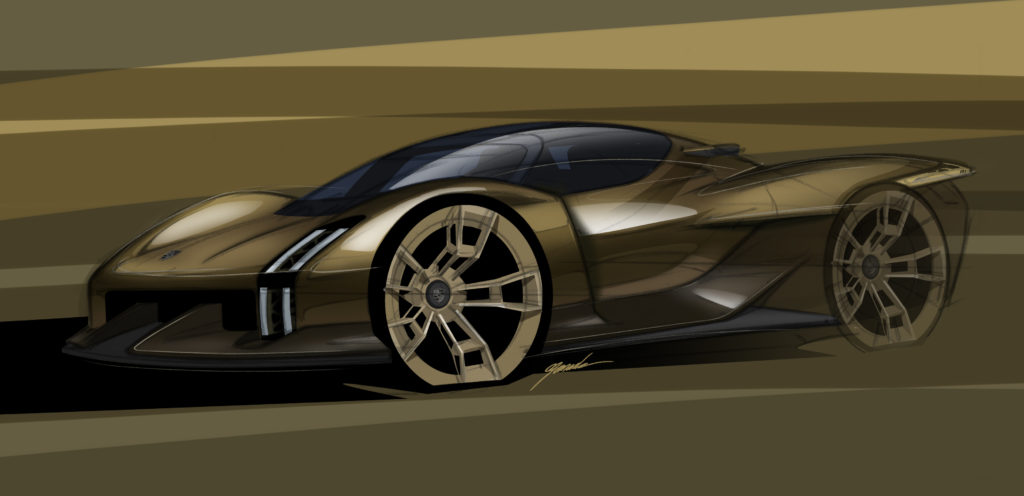
Clearly a Porsche
Although the Mission X features many innovative design concepts, its Porsche DNA is unmistakable. Even without the Porsche crest, this hypercar concept would be instantly recognisable as a model from the sports car manufacturer. The Mission X combines characteristic design features while at the same time offering a glimpse into the future of Porsche’s unmistakable brand and product identity. The concept study evokes legendary racing cars from different eras of the brand’s history and propels them into the future.
Despite its ultimate e-performance and corresponding aerodynamic demands, the body is not a patchwork of jaunty, unappealing angles, but rather a sculpted form shaped by the dynamic surfaces for which the brand is famous. The aerodynamics concept is borrowed from motor racing. The unusual appearance was made possible by directing the airflow through the body. Together with its classical proportions, lightweight glass dome over the cabin and upwardly pivoting Le Mans-style doors, the result is a sports car of superlative design.
“The Mission X is a clear commitment to the core of our brand,” says Michael Mauer, Vice President Style Porsche. “The continuing, enhanced expression of our brand and product identity is an important compass for us to navigate the development of our series-production models. The concept study symbolises a symbiosis of unmistakable motorsport DNA with an overall sense of luxury. “Another very exciting aspect of Mission X is its unifying of apparent contradictions: a highly developed performance capability that coexists with highly efficient, sustainable technology. The design of the concept study once again underscores the brand’s clearly defined design criteria and offers a tantalising glimpse into the future.”
Lightweight glass dome and Le Mans-style doors: a futuristic concept
Instead of the usual glasshouse with a metal roof and conventional side windows, here the occupants ride in style beneath a lightweight glass dome. With its transparent surface, the spectacular roof structure is reminiscent of an aircraft cockpit or of earlier racing cars such as the Porsche 917 (1969). Smaller windows that can be lowered have been integrated into the larger side windows. The lines are all but seamless.
Like in the Mission R (2021), Porsche has used an ‘exoskeleton’ as the support structure. This carbon-fibre-reinforced plastic structure combines low weight with a striking appearance. Above the front window there is a small additional glass area. This ‘Daytona window’ was utilised in historic racing cars to enable improved visibility in banked turns and offers an even more open sense of space in the Mission X.
Equally sensational: the Le Mans-style doors are attached to the A-pillars and the roof, and they open forwards and upwards. This type of door was previously used in the legendary Porsche 917 racing car. There is a projector integrated in the driver’s door. This underscores the performance-oriented approach yet again: the current conditions on the racetrack are projected onto the ground: outside temperature, relative humidity and wind speed are displayed digitally to the driver before they climb into the car.
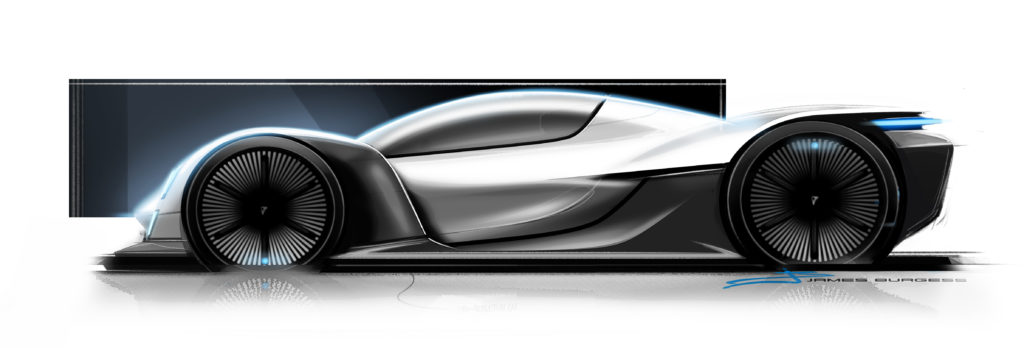
Silhouette: long and sweeping in the style of iconic racing cars
As with the legendary Porsche 917, the silhouette of the Mission X traces a rising line from the low, flat front bodywork up over the wings. The front end is offset from the rear, with the two sections having the appearance of two bodies pushed into each other. This both underscores the stark, three-dimensional sculpture and is at the same time part of the aerodynamics concept in which the airflow is directed through the front end with maximum efficiency.
The body is finished in Rocket Metallic – an elegant paint colour specially designed for the concept study. The special feature of this is its ‘flip effect’: depending on the viewing angle, the brown appears darker. Design elements in a carbon-weave finish feature below the beltline. This includes the side skirts, the front splitter and the large rear diffuser. These components are varnished in a satin finish and are therefore slightly coloured, but their material structure remains recognisable.
The area immediately behind the front wheels is exposed in classic racing car fashion, which allows better ventilation of the wheel arches. While the exterior has the classic Porsche combination of highly dynamic yet visually calm surfaces without decorative styling elements, the wheels of the concept study are elaborately detailed in line with their technical requirements: at the front, they are only lightly clad to allow the airflow necessary to cool the brakes. The wheels at the rear, meanwhile, are fitted with almost transparent aeroblades, which are designed like turbines for better cooling of the brakes. They are reminiscent of the legendary ‘turbine blade’ wheels of the Group A rally cars from the end of the 1980s. The alloy wheels (20 inches at the front, and 21 inches in diameter at the rear) feature a deep-dished design. The bronze-gold double spokes are relief milled, and as such combine lightweight construction and stability.
The designers dispensed with traditional exterior mirrors, opting instead for cameras positioned on the B-pillars and above the rear diffuser, among other places. The diffuser dominates the view from behind. Porsche Active Aerodynamics (PAA) enhance the aerodynamic properties with an active front wing and an extendable rear wing. This ensures optimal performance in every driving situation, whether the focus is on extending range or chasing lap times.
One special detail is the updated Porsche crest, which makes its debut on the Mission X. Brushed precious metal, a three-dimensional honeycomb structure, a refreshed heraldic beast and a more subtle gold colour – these are just a few of the careful modifications that distinguish the refined Porsche trademark from its immediate forerunner. With its much cleaner and more modern look, the reworked crest communicates the character of Porsche. It can be found on the front panel and steering wheel of the Mission X, as well as in a monochrome design on the wheel centres.
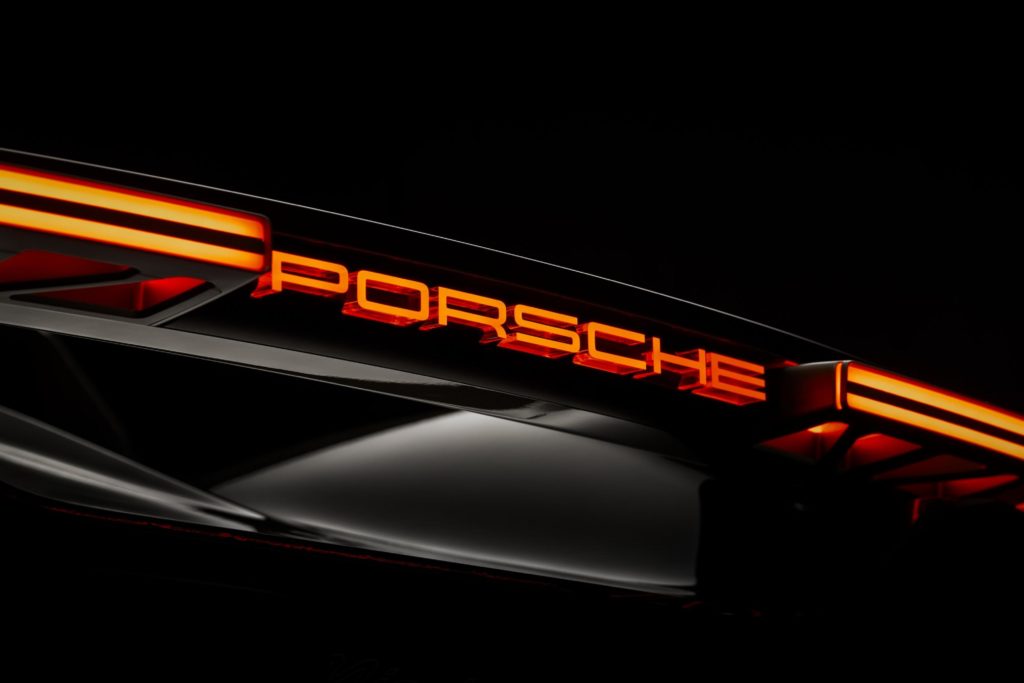
The Porsche light signature reinterpreted
The light signature is an elementary component of the Porsche brand identity. In the Mission X, the designers have reinterpreted the characteristic four-point graphic: The vertical base form of the headlights was inspired by historic racing cars such as the Porsche 906 and 908 and is drawn well down towards the road. A high-tech support structure frames the LED light modules and presents the exposed, narrow elements of the daytime driving lights and direction indicators. When activated, the light opens up like an eye blinking open. The headlights make a confident statement when fully illuminated.
A full-length light unit that seems to float in the air characterises the rear of the Mission X. A transparent, illuminated Porsche logo is a standout feature. The sculpted rear light emerges, as if suspended in mid-air, from a modern support structure and extends across the entire width of the vehicle in four segments. While charging, the ‘E’ in the Porsche logo pulsates, adding a sense of mystery. In a similar fashion, there is also a blinking light in the support structure of the rear light and headlight. Even in such details, the Mission X provides impetus for the further development of future vehicles.
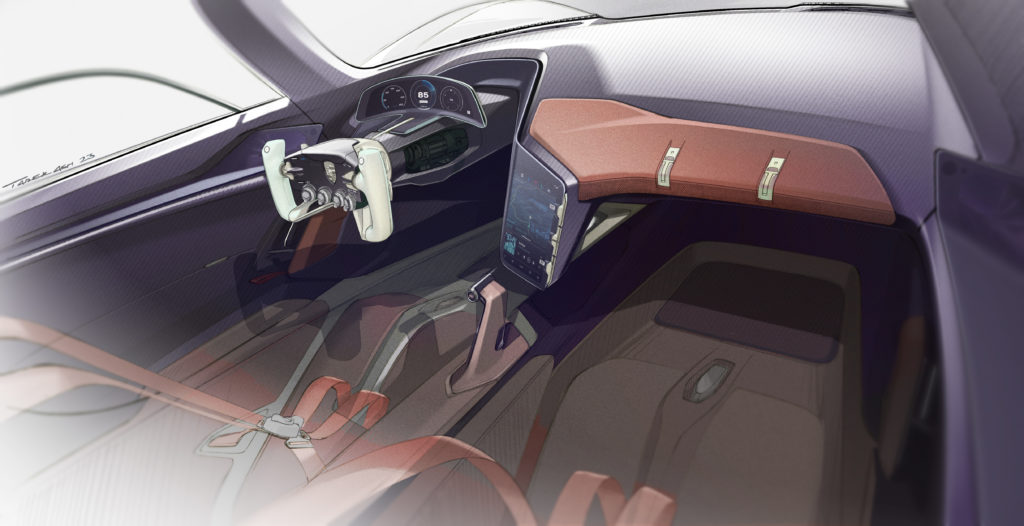
Interior: Focus on the driver
Porsche sports cars have always been tailored to the needs of the driver. In the Mission X, this focus reaches a new level. All essential display and control elements are on the ’river’s axis. As is common in racing cars, the steering wheel and pedal are longitudinally adjustable, while the CFRP seat shells integrated into the monocoque are fixed. Another motorsport parallel: inspired by the highly customised seats of professional drivers, the seats can be customised with 3D-print bodyform full bucket seats.
To enable quick adjustment of the distance between the accelerator and brake pedals, a scale is milled into the ’river’s footwell. Both occupants are secured with six-point seat belts. Andalusia Brown leather pads on the seat cushions and backrests as well as matching fabric sections in the integrated headrests play with materials and colour. The latter are easily removed with clips if, for example, the driver and passenger are wearing helmets and neck restraints on a race track.
The driver focus can also be seen in the asymmetry of the interior and its colour concept: the two seats are coloured differently. Apart from the customisable parts of the 3D-print bodyform full bucket seats, the driver’s seat is Kalahari Grey and matches the colour of the centre console and instrument panel. The passenger seat, meanwhile, is finished in contrasting Andalusia Brown. An LED light strip is integrated in the centre of both seats. This greets the occupants with a ‘welcome’ gesture.
The steering wheel is open at the top, with the two leather-upholstered grips in Kalahari Grey fitting smoothly into the hand. As in the current 911 GT3 RS, there are four individual mode switches on the steering wheel. Rockers and paddles are available as additional control elements for controlling features such as the brake energy recuperation function.
The curved instrument cluster sits at the highest point of the steering column: it has a concave shape for better readability and is oriented towards the driver. The concept offers the choice between a display featuring classic Porsche dials or a full-screen navigation map. In Track mode, the displays shift to a functional representation with dedicated track-focused content.
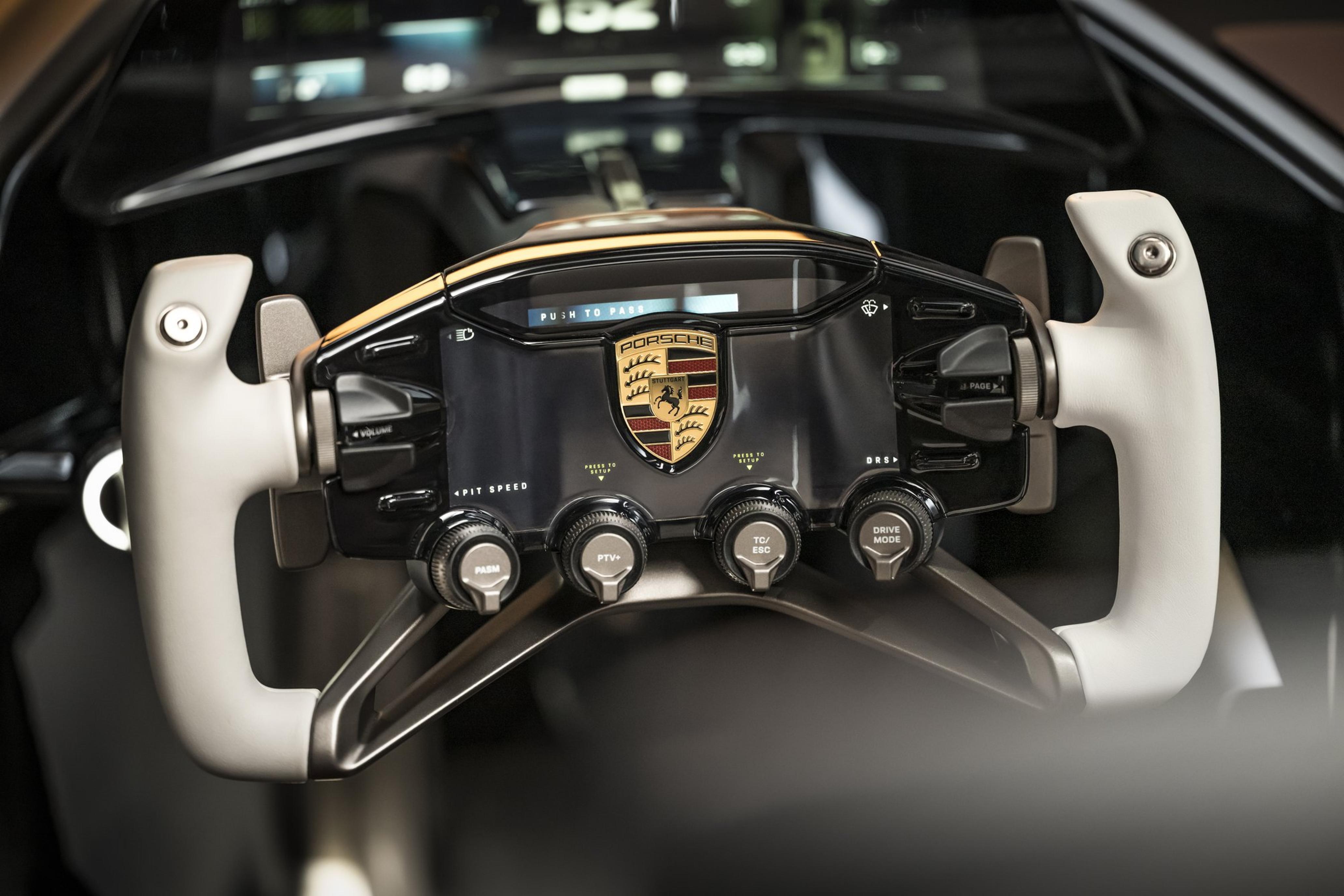
On top of the steering column, a small display window offers a view of the airbag module. As in a racing car, the material used in the steering column has been optimised for weight. The 7.8-inch central display faces the driver. Prominent aluminium controls are positioned to its right. Here again, designers have performance-oriented driving in mind: the climate controls can even be operated with racing gloves on. In classic Porsche fashion, the ‘Le Mans’ starter button is located to the left of the steering wheel and features an elegant, authentic metal design. Here, the designers were inspired by the elegant metallic detailing of historic cameras.
A pair of six-inch displays are integrated in the mirror attachment piece between the door panel and A-pillars. They function as digital side mirrors, with the external cameras transmitting the visual information to them via a control unit. Spectacular video footage can be recorded inside the car as well: one camera mounted in the roof and two cameras in the doors next to the digital exterior mirrors record what is happening in the cabin in real time. Recording starts as soon as the driver presses the record button (REC) on the multi-purpose controller. This also functions as a control lever.
There is another interior highlight on the passenger side, where a bayonet system embedded in the instrument panel enables a stopwatch module to be quickly attached. The historical reference is unmistakable: in classic racing and rally cars, co-drivers often fitted a plate with stopwatches or a compact device with an odometer into the dashboard in this position. Porsche Design created a special timing module for the Mission X, with an analogue and digital display. The stopwatches are designed for both racetrack and rally use and can display the lap times or health data of the driver, among other information.
A small, closed compartment in the trim behind the seats provides practical storage. Smartphones can be charged wirelessly in the shelf in front of the multi-purpose controller. The air vents of the air conditioning system are located in the doors. Because even in a hypercar, Porsche never loses sight of everyday usability.
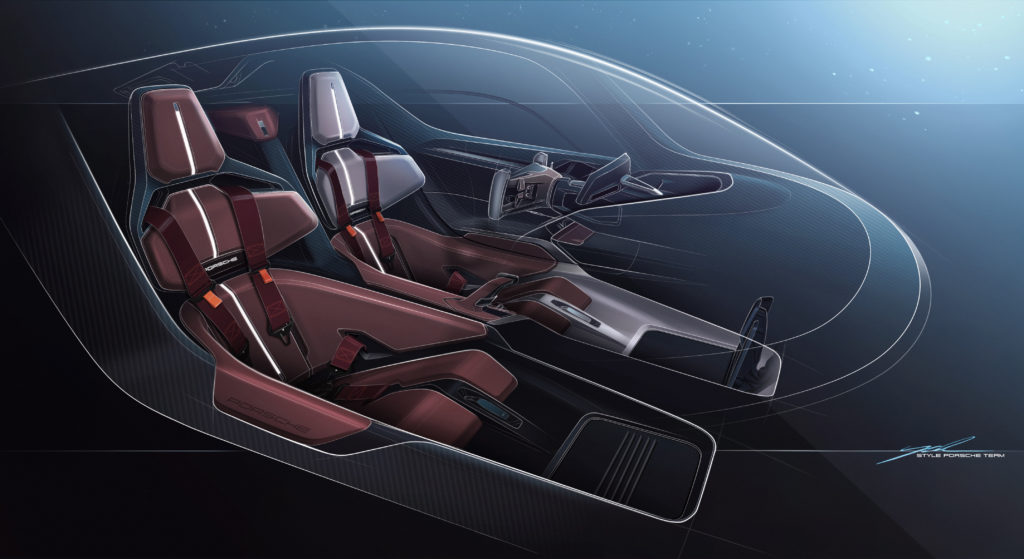
Top Marks in Power to weight, Drag and Downforce
Porsche exemplifies e-performance yet is also a pioneer in sustainable mobility. The concept study fully meets both objectives. Our visions: if the Mission X is to go into series production, then it should
- Be the fastest road-approved vehicle on the Nürburgring Nordschleife.
- Have a power-to-weight ratio of roughly one PS per kilogram.
- Achieve downforce values well above the level of the current 911 GT3 RS.
- Offer a significantly improved charging performance with its 900-volt system architecture, and charge roughly twice as quickly as Porsche’s current frontrunner, the Taycan Turbo S.
Extreme lightweight construction and an all-electric drive concept with powerful electric motors are the basis for the outstanding power-to-weight ratio. By way of comparison, the Porsche 918 Spyder has a power-to-weight ratio of 0.5 PS per kg.
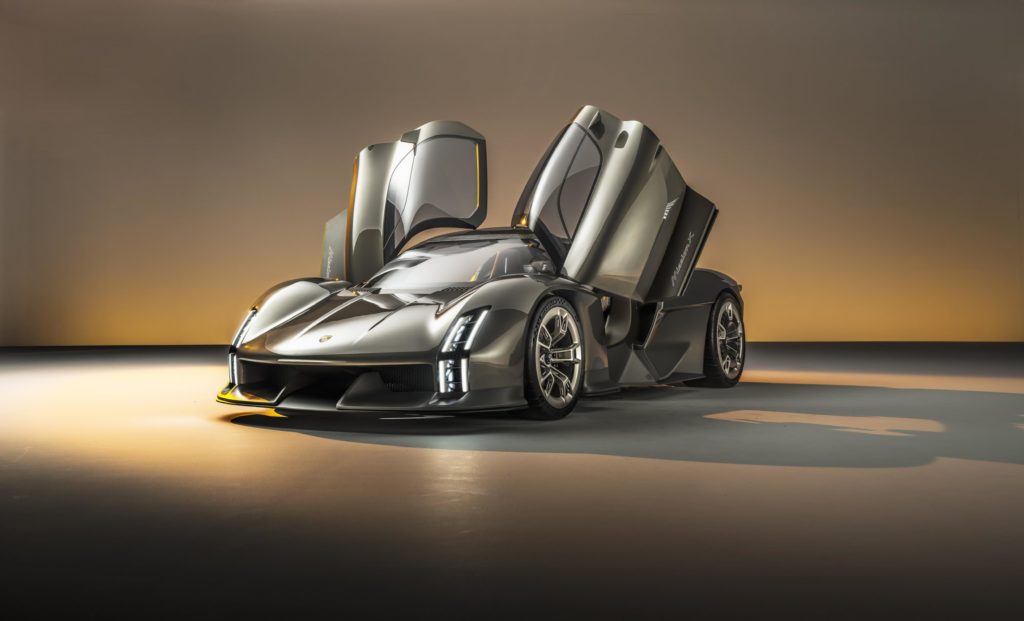
Lightweight design throughout
Lightweight design is part of the Porsche DNA. A light car is not only more efficient but is in particular more agile in corners – decisive characteristics for a hypercar aiming for exceptional performance and lap times. As a supporting element, the high voltage battery is integrated into the rear of the car to perform this function.
This innovative design principle for high voltage batteries in electric vehicles is part of the lightweight construction concept of the Mission X concept study. Individual systems are combined to form functionally integrated structures that perform both thermal and mechanical tasks. Cooling systems, for example, are integrated directly into the support structures of the body, which both saves weight and further optimises cooling.
Lightweight construction is also immediately apparent in the form of large-scale carbon-weave sections and the support structures of the frames for the lights. With the 900-volt system architecture, the compact, weight-optimised powertrain, the exoskeleton made of carbon-fibre reinforced plastic (CFRP) and many other measures, the Mission X concept study underscores its claim as a simultaneously high-performance and lightweight Porsche hypercar.
High continuous power output and substantially improved charging performance
The electric motors are the next generation of powerful, permanently excited synchronous motors (PSM) – much like in the Mission R concept study. The direct cooling of the stator feeds the oil directly along the copper windings. This allows the heat from the motors to be dissipated directly at source and their effectiveness to be increased.
This is how the very high peak performance, its consistency and the exceptionally high efficiency associated with motorsport are achieved. Thanks to the enormous performance potential of the electric motors, during acceleration power is transferred to the wheels without any losses via a compact, weight-optimised single-speed transmission. The drive-energy is delivered by a high-performance battery with state-of-the-art technology coupled with a 900-volt system architecture. The very high voltage enables performance advantages without necessitating weight compromises and additional heat losses.
Likewise, the directly oil-cooled battery with high-end cells offers an optimum combination of efficiency, weight and power. The cell chemistry is designed for maximum performance. The position of the battery, installed centrally behind the seats in the vehicle in an e-core layout, enables a low, driver-optimised seating position. In comparison to a conventional underfloor battery, the e-core layout helps centre the weight in the car. As with a conventionally powered mid-engined car, this results in excellent agility.
Comprehensive aerodynamic concept with Porsche Active Aerodynamics (PAA)
The e-core layout of the Mission X concept study enables a very low-slung, dynamic flyline. The exoskeleton made of carbon-fibre-reinforced plastic (CFRP) with a lightweight glass dome has a very slim design. Conventional rear-view mirrors have been dispensed with and the wheels are aerodynamically optimised.
And, because the airflow around the car is routed through the body, the Cd value of the concept study has been reduced to the maximum for optimised energy efficiency on the track. This in turn has enabled the battery to be optimised, weight reduced, and performance increased.
However, aerodynamics are more than simply efficiency due to low wind resistance. To achieve outstanding driving dynamics on the track, high downforce is also required. The Mission X concept study achieves the necessary downforce by means of Porsche Active Aerodynamics (PAA), which includes a Drag Reduction System (DRS) and aerodynamic elements in the lower area of the car and in the underbody.
The adaptive aerodynamic elements are intelligently controlled based on numerous parameters such as driving mode, lateral acceleration (cornering forces) and speed. This affects both drag and downforce. As a result, the Mission X concept study can be set up for maximum efficiency as well as the best possible performance on the track.
Damper technology from the world of motorsport
For aerodynamic purposes, the concept car has mixed-size tyres, with 20-inch wheels at the front and 21-inch wheels at the rear. At the same time, the tyres on the driven rear axle (315/20 R 21) are six centimetres wider than on the front axle (255/35 R 20).
The damper technology and the suspension are derived from the motorsport arena. As with the current 911 GT3 RS, the driver is supported by many chassis systems, which they can directly access and operate via four individual mode switches on the steering wheel. This allows for quick access. The rebound and compression stages of the dampers can be adjusted individually for the driver and the conditions via the PASM mode switch.
PTV Plus enables the optimisation of steering behaviour and precision during highly dynamic driving. The driving modes and the Electronic Stability Control (ESC) and Traction Control (TC) systems are adjusted via two further mode switches. The chassis of the Mission X is at once designed both for extraordinary lap times and precise adaptation to the wishes of the driver.

